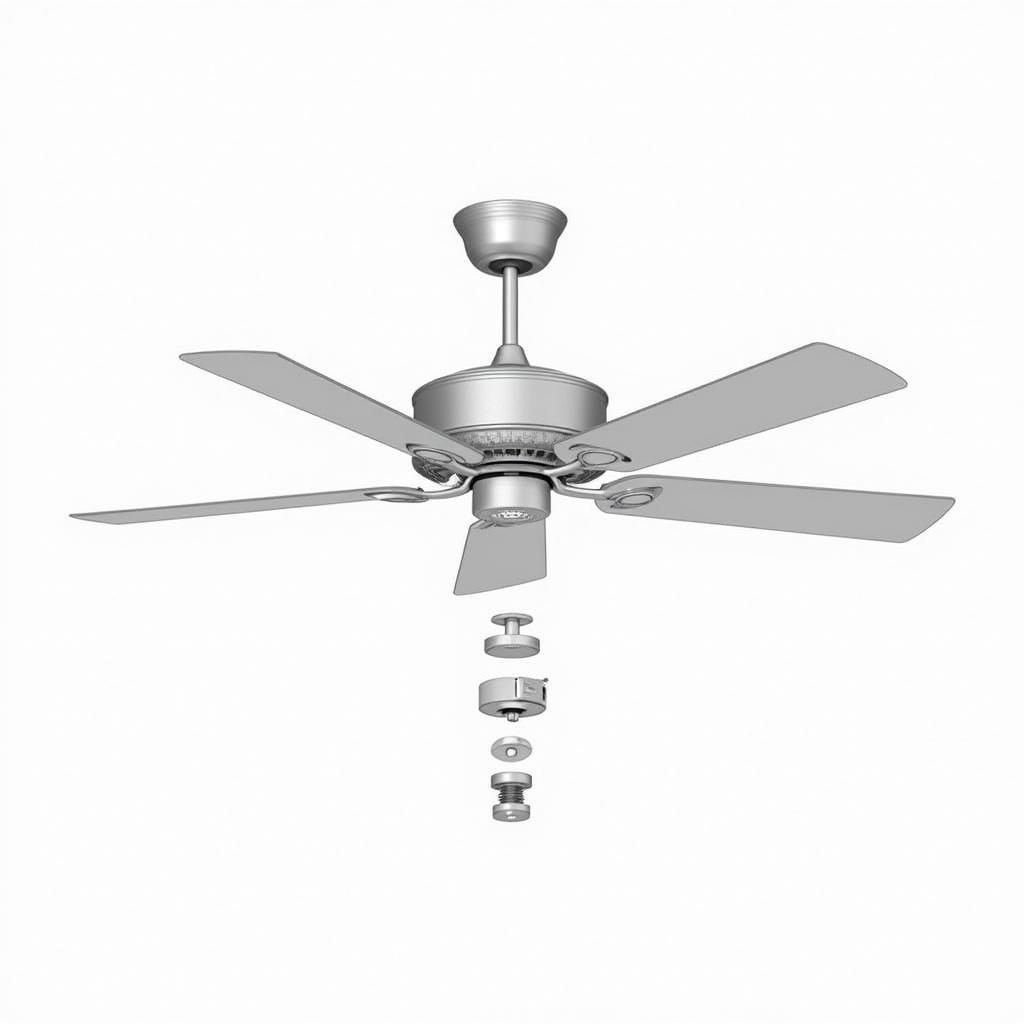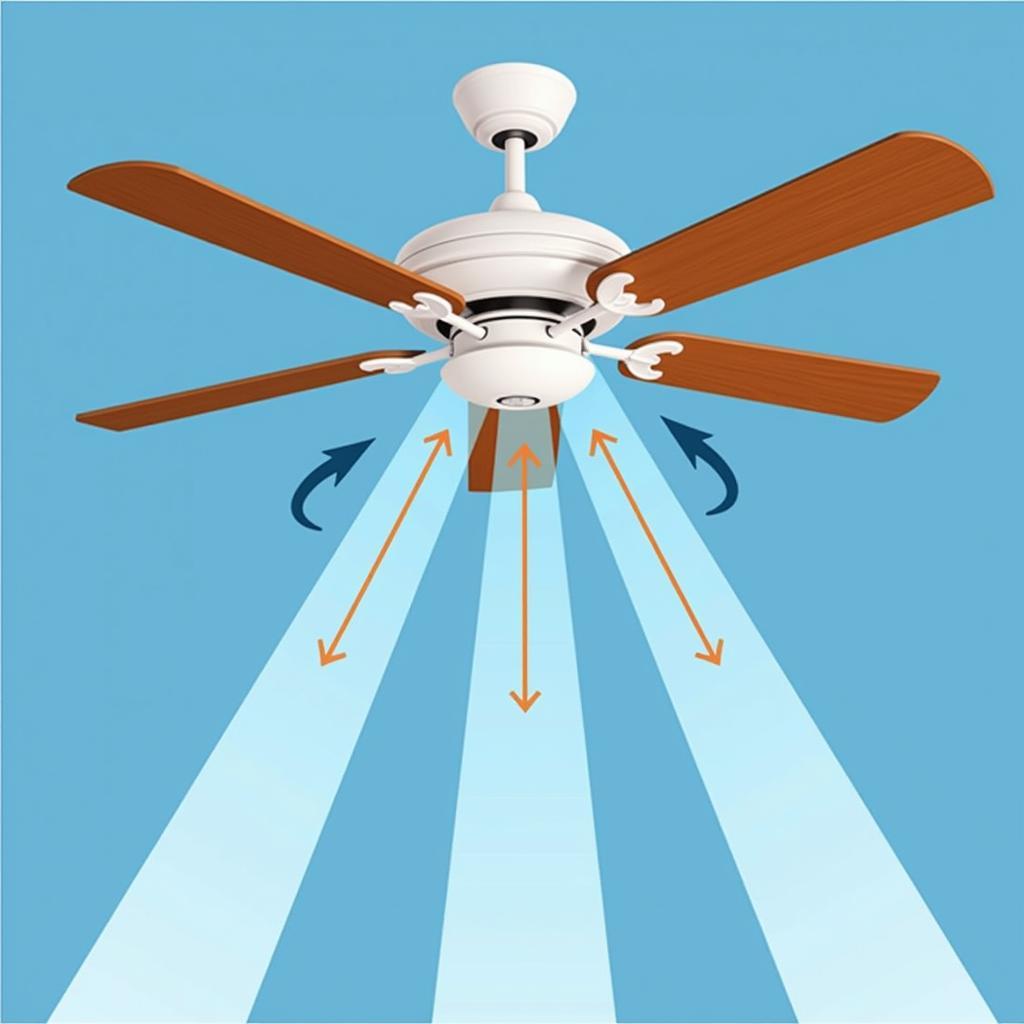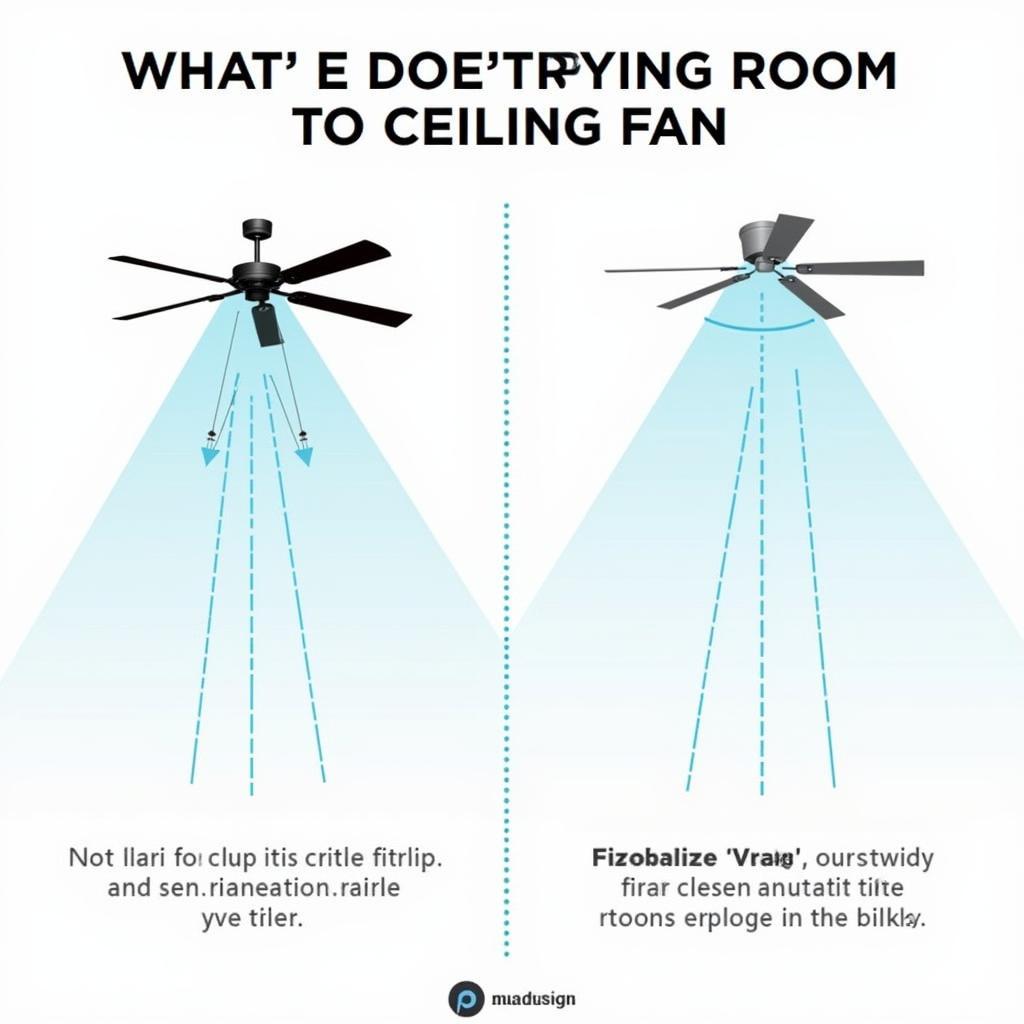A ceiling fan is a staple in many homes, providing a welcome breeze and cooling relief during warmer months. But have you ever stopped to wonder how these rotating marvels actually work? The science behind their operation is surprisingly simple yet fascinating.
 Parts of a ceiling fan
Parts of a ceiling fan
The Mechanics of a Ceiling Fan
At its core, a ceiling fan is a relatively straightforward device. It consists of a motor housed within a decorative casing, typically mounted to the ceiling. Extending from this motor are several blades, usually three to five, carefully angled to create airflow.
When the fan is switched on, the motor rotates, turning the blades connected to it. This rotation sets the air in motion. The angle of the blades plays a crucial role here. They are designed to push air downwards as they spin. This downward flow of air creates a breeze that cools people and objects in the room.
 Airflow of a ceiling fan
Airflow of a ceiling fan
Understanding the Cooling Effect
You might be surprised to learn that ceiling fans don’t actually lower the temperature of a room. Instead, they create a wind chill effect. The moving air generated by the fan evaporates moisture on your skin, making you feel cooler. This is the same principle that makes you feel cold when you step out of a shower or pool.
“Think of a ceiling fan as your own personal breeze maker,” says HVAC expert, James Miller. “It doesn’t change the actual room temperature, but it sure makes you feel cooler by helping your body regulate its temperature more efficiently.”
Ceiling Fan Direction: Summer vs. Winter
Most ceiling fans come with a switch that allows you to reverse the direction of the blades. This feature isn’t just for show; it serves a practical purpose.
Summer Mode (Counterclockwise): In the summer, you want the fan to rotate counterclockwise, pushing air downwards. This creates the wind chill effect we discussed earlier, making you feel cooler.
Winter Mode (Clockwise): During colder months, reversing the fan to rotate clockwise can actually help distribute warm air more evenly. In winter mode, the blades draw cool air upwards towards the ceiling. This forces the warmer air that naturally rises to be pushed downwards along the walls and back into the living space.
 Ceiling fan rotation direction
Ceiling fan rotation direction
Conclusion
Ceiling fans are a testament to simple yet effective engineering. By harnessing the power of airflow, they provide a cost-effective way to enhance comfort in our homes. Understanding how ceiling fans work empowers you to maximize their cooling potential and energy efficiency. So, next time you enjoy the refreshing breeze of a ceiling fan, you’ll have a newfound appreciation for the science behind its spin.


